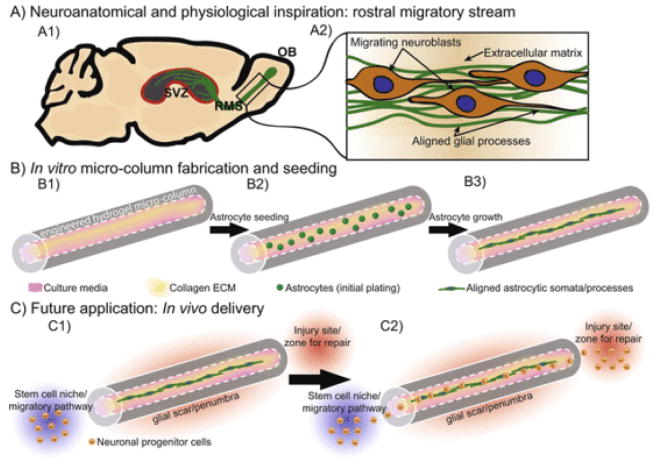Fig. 1.
Schematic representation of aligned astrocyte construct designed to promote central nervous system regeneration. The objective of this study was to create a “living scaffold” composed of aligned astrocytes that mimic developmental processes to ultimately facilitate central nervous system repair. (A1) This engineered “living scaffold” aims to recapitulate the rostral migratory stream (RMS), which extends from the subventricular zone (SVZ) – a known stem cell niche – to the olfactory bulb [54], and (A2) contains a tract of aligned glial somata and processes on which developing neuroblasts migrate. (B1) To emulate this anatomical pathway, we first employ a biomaterial scheme featuring an agarose hydrogel micro-column of specified outer and inner diameters (generally 2–3 times the diameter of a human hair) coated with a bioactive collagenous matrix on the inner surface to promote cell adherence and survival. (B2) Astrocytes were then microinjected into the hydrogel micro-column, (B3) ultimately forming longitudinally aligned astrocytic somata and processes within the center of the micro-column. (C1) This micro-construct has the potential to physically bridge a glial scar/penumbra to provide a living labeled pathway to redirect migrating neuroblasts from a stem cell niche, such as the SVZ/RMS, (C2) to a site of focal injury.

